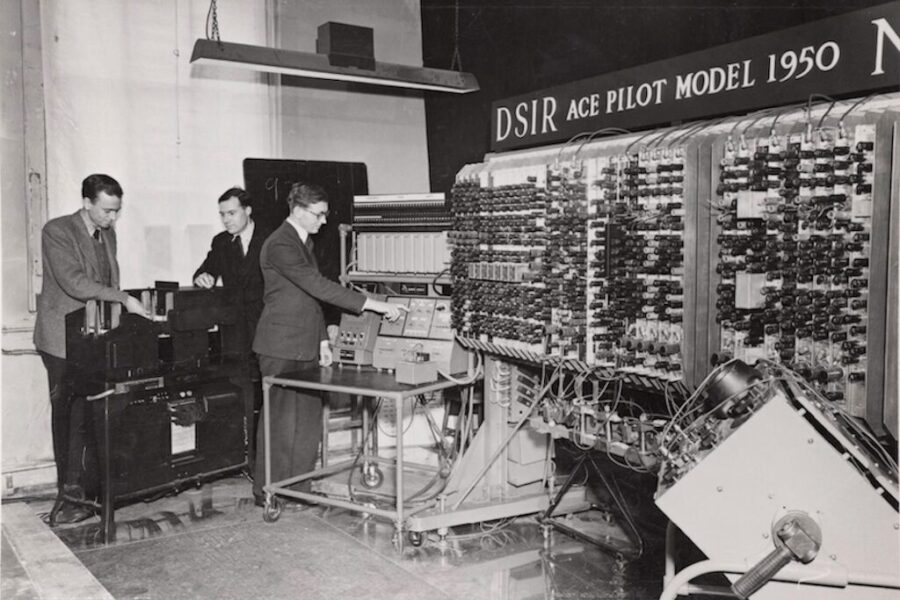Main Image: The Pilot ACE computer at the National Physical Laboratory, Teddington in 1950. Part of the NPL/Woodger archive. Made available by the Science Museum, released under Creative Commons Zero
In May 1950, the National Physical Laboratory (NPL) ran the first program on its recently constructed Pilot ACE (Automatic Computing Engine) before it went into service the following year. The Pilot ACE was one of the first computers built in the UK and one of the earliest with general-purpose, stored-program capabilities. It followed on from the Manchester Mark 1 (1948) and Cambridge’s EDSAC (1949).
It has particular significance as it was a smaller version of Alan Turing’s design for a universal computer, ACE, that could be reprogrammed for different purposes. Turing began work at NPL, in southwest London, in 1945 after the end of the Second World War during which he was key to breaking the German Enigma code. He produced his plans for the ACE computer in 1946 but left NPL the following year before the construction was completed, as he was disillusioned by its slow progress.
During a sabbatical his old friend from his days codebreaking at Bletchley, Max Newman, asked him to be deputy director of a computer laboratory he was setting up at the University of Manchester. Turing joined Newman in October 1948 where he would make significant contributions to the Manchester ‘Baby’ being developed into the Mark I.
A foretaste of what’s to come
In an interview with The Times in 1949, Turing was prophetical about ACE and the early computers he was working on at Manchester “This is only a foretaste of what is to come, and only the shadow of what is going to be.”
James H Wilkinson took over the ACE project and involved in the design were Harry Huskey, Mike Woodger and Donald Davies the latter of which was manager of the Advanced Computer Techniques Project at NPL and who subsequently began the exploration of and coined the term packet switching in the mid-1960s.
The Pilot ACE saw considerable operational use until being put out of service in 1955 (with the original machine donated to the Science Museum). That year a commercial version of the Pilot ACE, named the DEUCE (Digital Electronic Universal Computing Engine), was constructed and sold by the English Electric Company, fuelling the UK’s then groundbreaking computer industry.
